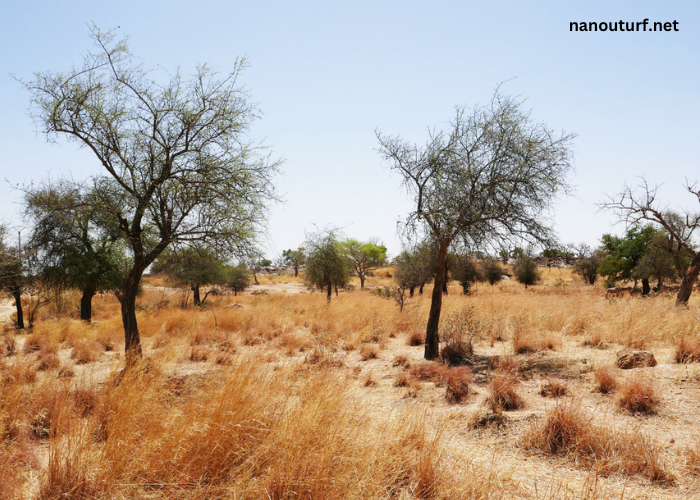Météo Bobo-Dioulasso

Bobo-Dioulasso, the second-largest city in Burkina Faso, is a vibrant hub known for its rich culture, bustling markets, and friendly locals. As in many places, the weather plays a crucial role in daily life, influencing everything from agricultural practices to social gatherings. This article delves into the climatic conditions, seasonal variations, and the importance of accurate weather forecasting for the residents of Bobo-Dioulasso.
The Climate of Bobo-Dioulasso
Bobo-Dioulasso experiences a tropical savanna climate, characterized by distinct wet and dry seasons. The city is situated in the western part of Burkina Faso, which significantly impacts its weather patterns. The average annual temperature hovers around 28 degrees Celsius (82 degrees Fahrenheit), with fluctuations depending on the season. Understanding these climatic conditions is essential for residents and visitors alike.
Seasonal Breakdown
The weather in Bobo-Dioulasso can be broadly divided into three main seasons: the dry season, the rainy season, and the cool season. Each of these periods has its unique characteristics that affect both daily life and agricultural activities.
The Dry Season: Lasting from November to March, the dry season is marked by low humidity and minimal rainfall. Temperatures can rise significantly during the day, often exceeding 35 degrees Celsius (95 degrees Fahrenheit). This period is characterized by dusty winds, particularly from the Harmattan, a dry and dusty trade wind that blows from the Sahara Desert. During this time, residents often prepare for the upcoming rainy season, focusing on activities such as harvesting crops and maintaining their homes.
The Rainy Season: From June to September, Bobo-Dioulasso experiences its wet season, which is crucial for agriculture. Rainfall during this period can be heavy, providing the much-needed water for crops. Average monthly precipitation can reach up to 200 millimeters (7.9 inches). This season is vital for farmers, as it determines the success of their crops and, subsequently, their livelihoods. However, the heavy rains can also lead to flooding and other challenges, requiring residents to stay vigilant and prepared.
The Cool Season: The months of October and November mark a transitional period known as the cool season. Temperatures begin to drop slightly, and the humidity levels increase as the region prepares for the upcoming rainy season. This period is often favored by residents for outdoor activities and events due to the more comfortable weather conditions.
The Importance of Accurate Weather Forecasting
In a city where agriculture plays a central role in the economy, accurate weather forecasting becomes essential. Farmers depend on reliable weather predictions to make informed decisions about planting and harvesting crops. For example, knowing when the rains will start can help farmers determine the best time to plant seeds. Additionally, forecasts can help them prepare for potential flooding or drought conditions.
With advancements in technology, the methods used to forecast the weather have improved significantly. Local meteorological services and global weather organizations provide daily updates, including temperature predictions, rainfall forecasts, and severe weather alerts. Residents of Bobo-Dioulasso can access this information through various channels, including mobile apps, radio broadcasts, and online platforms. Staying informed allows the community to mitigate risks associated with extreme weather events and better plan their activities.
Impacts of Climate Change
As with many regions around the world, Bobo-Dioulasso is not immune to the effects of climate change. Changing weather patterns, such as altered rainfall distribution and increased temperatures, pose significant challenges for the local population. Farmers are particularly vulnerable, as shifts in climate can disrupt traditional agricultural practices, leading to decreased yields and economic hardship.
The government and various non-governmental organizations are working to address these challenges through climate adaptation strategies. Initiatives may include promoting sustainable farming practices, investing in water conservation techniques, and improving access to climate information for local communities. By adapting to the changing climate, Bobo-Dioulasso can work towards a more resilient future.
Preparing for Extreme Weather Events
Extreme weather events, including heavy rains, storms, and droughts, can have devastating effects on communities. In Bobo-Dioulasso, preparedness is key to minimizing the impact of such events. Local authorities, in collaboration with meteorological services, emphasize the importance of early warning systems. These systems provide timely information about severe weather conditions, allowing residents to take necessary precautions.
Community engagement is crucial in fostering a culture of preparedness. Workshops and informational sessions can educate residents about emergency plans, evacuation routes, and safety measures during extreme weather events. By equipping the community with knowledge, Bobo-Dioulasso can enhance its resilience against unpredictable weather conditions.
The Role of Traditional Knowledge
While modern meteorological services play a vital role in weather forecasting, traditional knowledge also holds significant value in Bobo-Dioulasso. Many local farmers possess ancestral wisdom about seasonal changes and weather patterns. This knowledge has been passed down through generations and includes observations of animal behavior, plant cycles, and changes in the environment.
Integrating traditional knowledge with modern forecasting techniques can enhance the understanding of local weather conditions. Collaborative efforts between meteorologists and community leaders can result in a more comprehensive approach to weather prediction, benefiting both agricultural practices and daily life in Bobo-Dioulasso.
Conclusion
Understanding the weather in Bobo-Dioulasso is essential for the well-being of its residents and the sustainability of its agricultural practices. With its tropical savanna climate, distinct seasonal variations, and the increasing importance of accurate weather forecasting, the community faces both challenges and opportunities. By embracing modern technology, integrating traditional knowledge, and fostering a culture of preparedness, Bobo-Dioulasso can navigate the complexities of its climate while striving for a resilient future. Whether you’re a farmer planning your next crop or a visitor enjoying the vibrant city, staying informed about the weather is key to making the most of your experience in Bobo-Dioulasso.
Leave a Comment